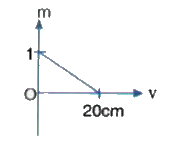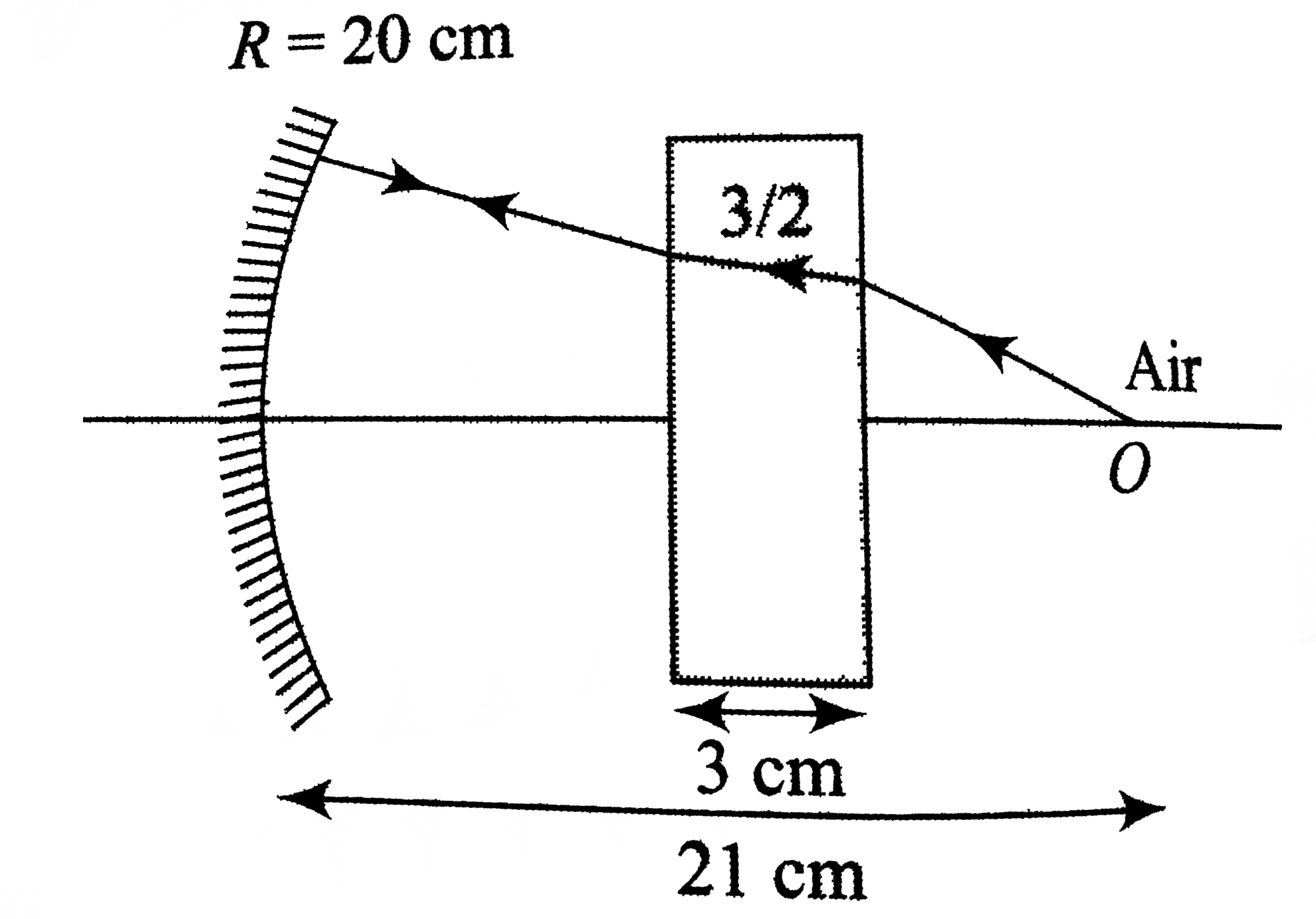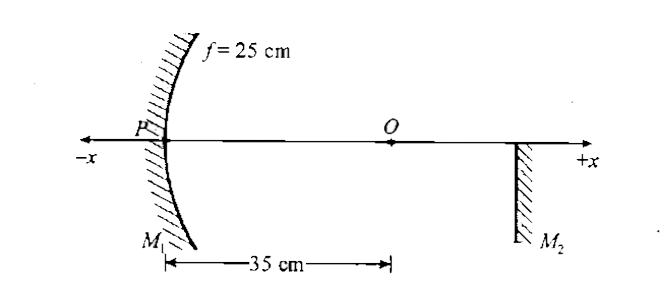To a real object, magnification and image distance graph is as shown in the figure. Find (a) the nature of the mirror and image. (b) the power of the mirror.

(a) convergent, virtual , (b) 5D
Topper's Solved these Questions
- RAY OPTICSBOOK - AAKASH SERIESCHAPTER - RAY OPTICSEXERCISE - PROBLEMS ( LEVEL-II)
50 Videos
- RAY OPTICSBOOK - AAKASH SERIESCHAPTER - RAY OPTICSEXERCISE - PROBLEMS ( LEVEL-II)
50 Videos
- PRACTICAL PHYSICSBOOK - AAKASH SERIESCHAPTER - PRACTICAL PHYSICSEXERCISE - LECTURE SHEET LEVEL-II (ADVANCED) Linked Comprehension Type Questions
6 Videos
- SEMICONDUCTOR DEVICESBOOK - AAKASH SERIESCHAPTER - SEMICONDUCTOR DEVICESEXERCISE - EXERCISE - II
31 Videos
Similar Questions
A spherical mirror produces an image of magnification -1, when an object is placed on the principal axis of the mirror at a distance of 40 cm form its pole.
(a) Identify the nature of image.
(b) Identify the nature of spherical mirror.
(c) Find the distance between the object and its image.
(d) How will the nature of the image change, if the object is shifted 10 cm towards the mirror ? Draw a ray diagram to justify your answer.
[Hint. (a) Image is real, inverted/same size as the object, (b) Concave mirror, (c) Zero, (d) Image will be formed beyond C, It will be larger in size.]
View SolutionAn object is placed in front of a concave mirror at a distance of 7.5 cm from it. If the real image is formed at a distance of 30 cm from the mirror, find the focal length of the mirror. What would be the focal length if the image is virtual.
View Solution
Knowledge Check
In case of a real and inverted image the magnification of a mirror is
Apositive and largeBnegativeCpositive and smallDnegative and largeIn case of a real and inverted image, the magnification of a mirror is
ApositiveBnegativeCzeroDinfinity
An object is placed in front of a concave mirror at a distance of 7.5 cm from it. If the real image is formed at a distance of 30 cm from the mirror, find the focal length of the mirror. What would be the focal length if the image is virtual.
View SolutionAn object is placed on the principle axis of a concave mirror of focal length 10cm at a distance of 21cm from it. A glass slab is placed between the mirror and the object as shown in figure.
Find the distance of final image formed by the mirror.

View SolutionAn object is placed on the principle axis of a concave mirror of focal length 10cm at a distance of 21cm from it. A glass slab is placed between the mirror and the object as shown in figure.
Find the distance of final image formed by the mirror.

View SolutionA concave mirror forms a real image four times as tall as the object placed 10 cm infront of mirror. Find the position of the image and the radius of curvature of the mirror.
View SolutionA concave mirror forms a real image of an object placed in front of it at a distance 30 cm, of size three times the size of object. Find a. the focal length of mirror b. position of image.
View SolutionIn figure shown find the distance from pole P of the concave mirror shown in figure, at which when a plane mirror is placed, image produced by both mirror for the object O will coincide.

View Solution
